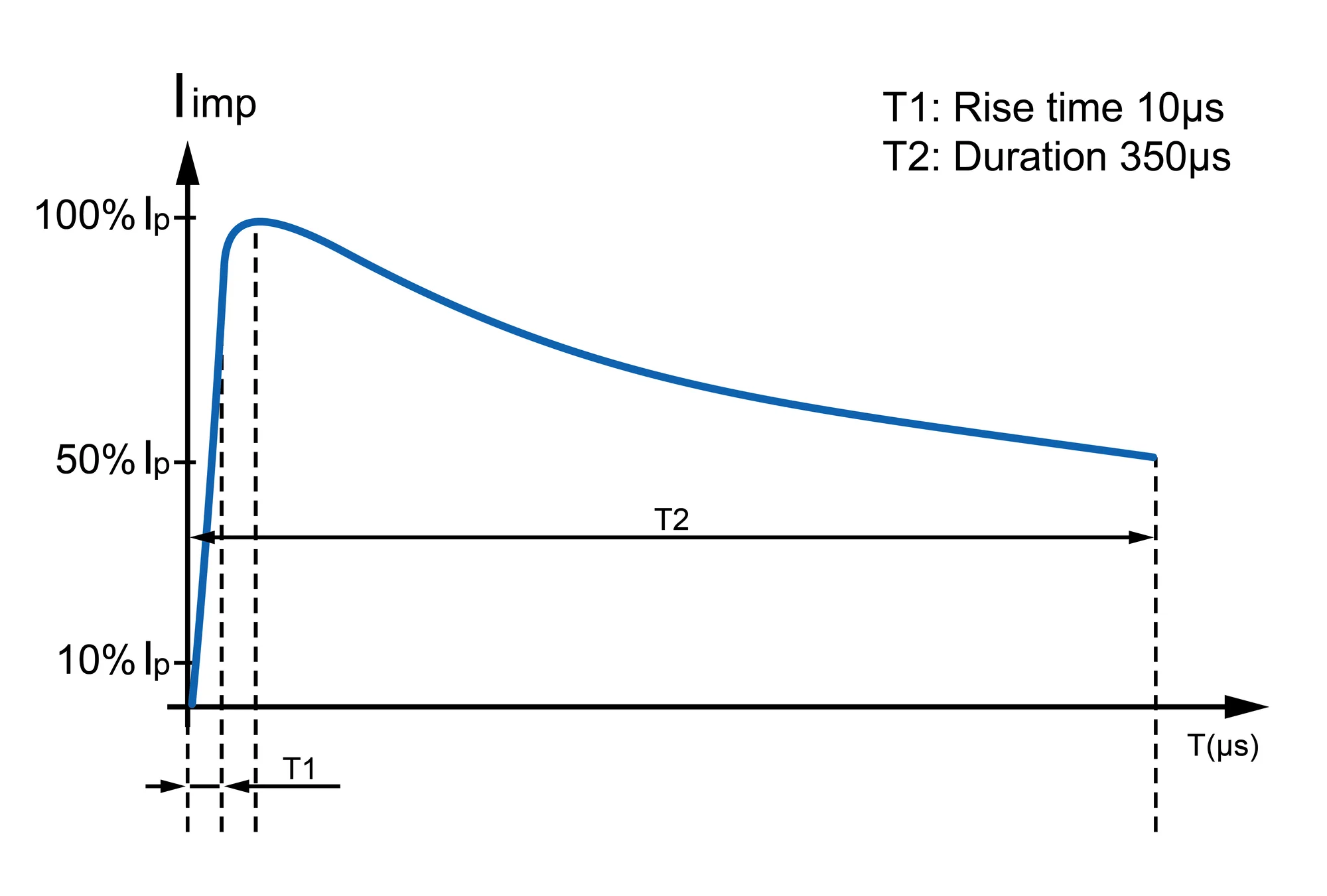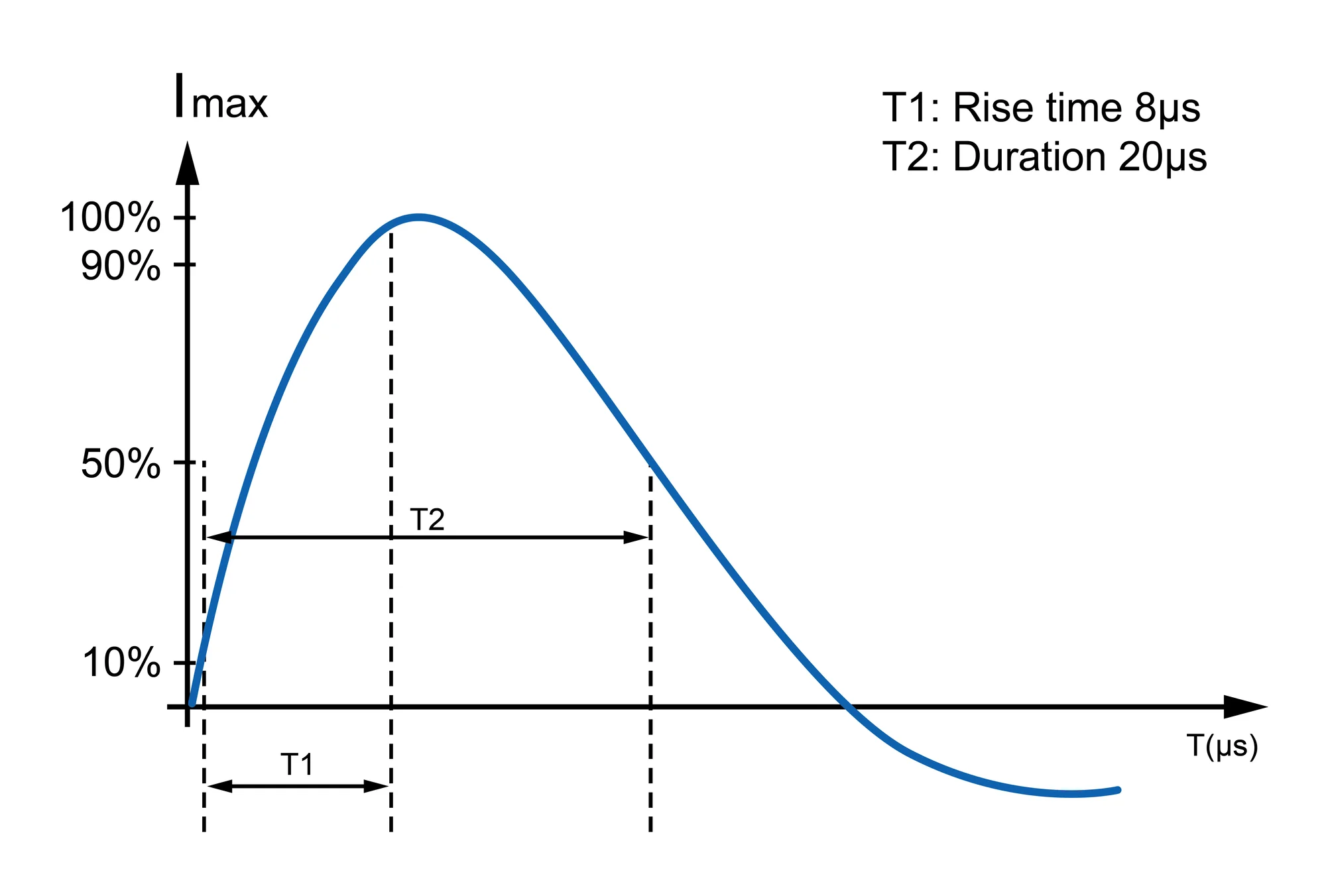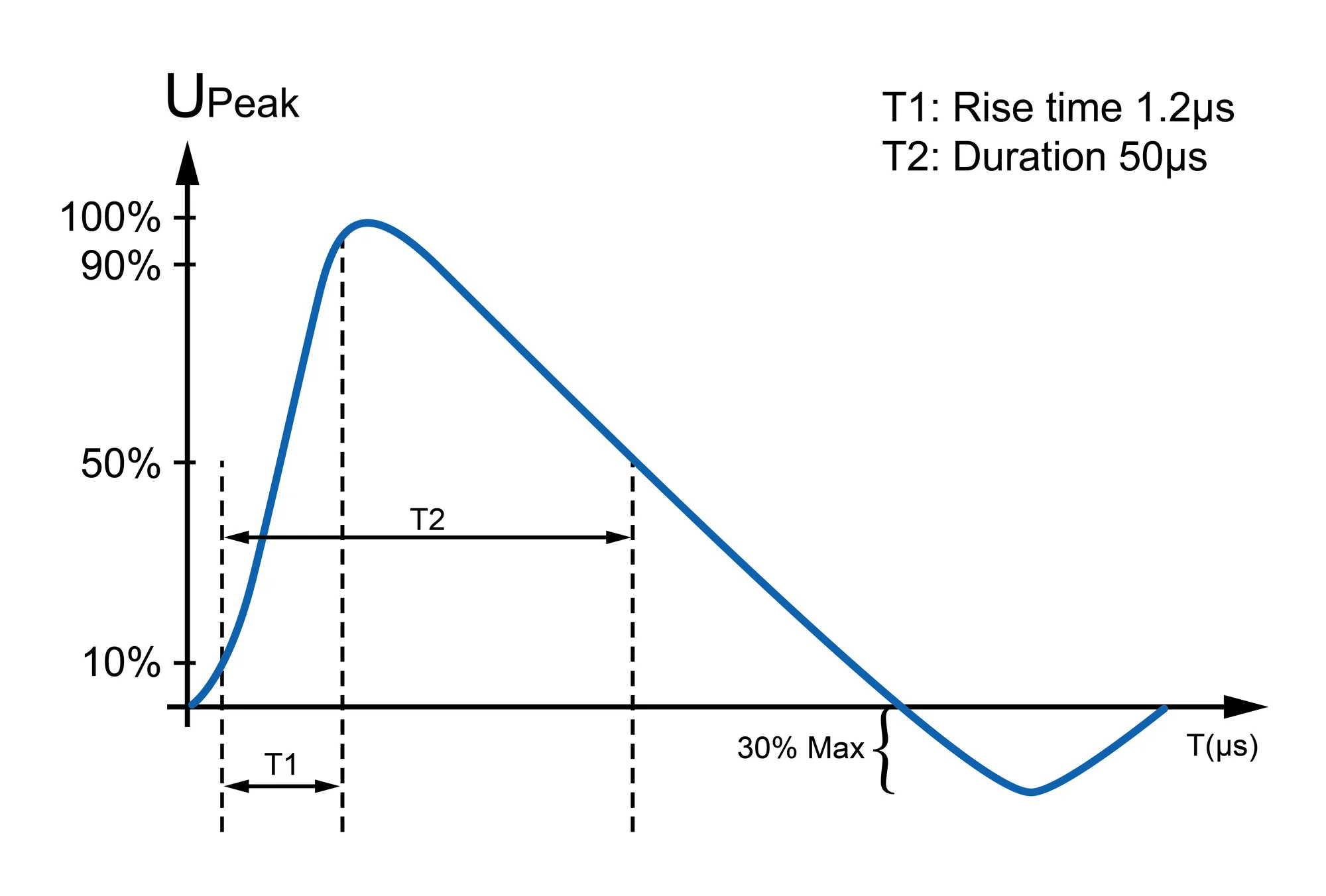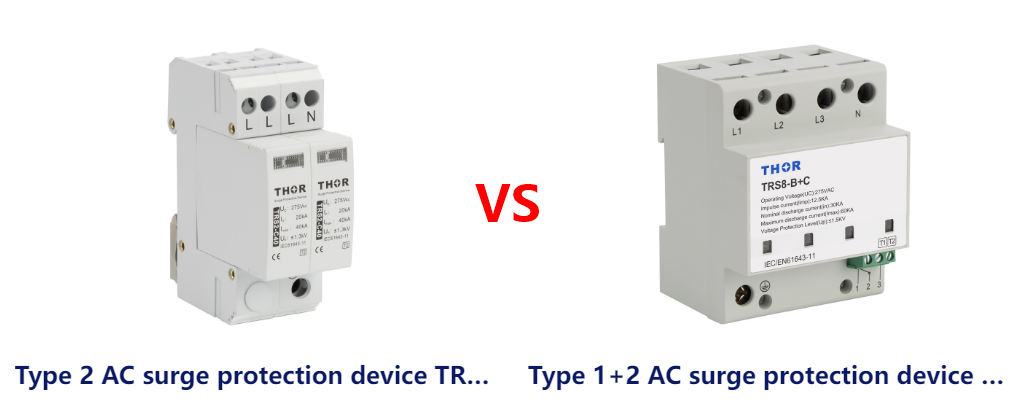What is a surge protection device

A surge protection device (SPD), also known as a surge protector or lightning arrester, is a device used to protect circuits and their associated electronic equipment from voltage spikes caused by electrical disturbances such as lightning strikes and power outages.
The device can also provide targeted protection for other electronic equipment, minimizing unexpected equipment downtime and ensuring normal operation. Its core principle is to transfer the discharge generated by overvoltage to the ground, thereby protecting downstream equipment.
Types of surge protection devices
There are different types of SPD according to different evaluation criteria, but they can be roughly divided into three categories: Type 1, Type 2, and Type 3. By referring to the table below, you can easily determine which type of SPD you belong to.
|
Protection type |
Direct lightning strike |
Indirect lightning strike |
Indirect lightning strike |
|
Standard: IEC 61643-1:2005 |
Type I Test |
Type II testing |
Level III Testing |
|
IEC 61643-11:2011 |
Type 1; T1 |
Type 2; T2 |
Type 3 |
|
EN 61643-11:2012 + A11:2018 |
Type 1; T1 |
Type 2; T2 |
Type 3 |
|
VDE 0675-6-11 |
Category B |
Category C |
Category D |
|
Test wave type |
10/350 microseconds |
8/20 microseconds |
1.2/50 microseconds |
T1/Class I SPD
Type 1 surge protectors are mainly used to protect equipment from high energy surges such as direct lightning strikes and external surges. Such devices are installed at the service entrance of a building or at the main distribution board. They have a higher surge current capacity. It is mainly used in industrial, commercial and residential applications.
T2/II level lightning arrester
Type 2 SPD is installed in the distribution board or sub-distribution board downstream of Type 1 SPD. This level should generally be used to cut off the secondary impact of surges and transient voltage spikes, and to prevent smaller surges that may enter the electrical system through branch circuits. It is mainly used in residential and commercial buildings.
T3/III level lightning arrester
Type 3 surge protectors are usually installed at the point of use, close to the equipment to be protected, and connected to various sockets. In short, it provides local protection, more or less reducing small surges that would otherwise disperse energy unnecessarily. Such devices are often used for various electronic protection of equipment, in which case the local protection is mainly targeted to a specific device.
Differences between different types of SPDs
Waveform Difference
In addition to simple distinctions based on table content or usage scenarios, grading can also be done by observing specific waveforms. The waveform here refers to the shape of data that appears after the instantaneous voltage or current surge that the SPD can withstand. Next, let's take a look at the three most common waveform standards:
Type 1 SPD (10/350 µs waveform)

This waveform rises first and then continues, with no buffer fluctuation in the early stage. This slowly rising voltage is specially designed to prevent direct lightning strikes. The rise time is only 10 microseconds and the duration is as long as 350 microseconds.
Type 2 SPD (8/20 µs waveform)

The second waveform is shorter, with a faster rise time of 8 microseconds and a relatively long duration of 20 microseconds, which protects against rapid voltage rises and large current surges that may be caused by activities such as switching operations or nearby lightning strikes.
Type 3 SPD (1.2/50 µs waveform)

The last waveform has an extremely fast rise time of only 1.2 microseconds and a duration of only 50 microseconds. This is a highly sensitive current. Typically, signal or data lines connected to the point of use are very sensitive to small surges caused by rapid voltage changes.
Energy handling capability differences
From the table above, we can see that in addition to judging by waveform values, usage scenarios, etc., the most commonly used method is to simply judge the difference in SPD energy processing, which is also related to the usage scenario. Because they were originally designed for different usage scenarios, and according to their location and protection level, they are further divided into:
Category B
Type 1 surge protective devices (SPDs) have energy handling capabilities of I imp (10/350 µs) 25kA to 100kA and can effectively handle the highest surge currents from direct lightning strikes or strong high-energy events.
Category C
Type 2 and Type 3 SPDs are both Class C. The former has an energy handling capability ranging from In and I max (8/20 µs) 20kA to 75kA. While it can handle medium-sized surges, it is not as good as a Class B direct lightning strike. The latter is designed to handle the smallest surges generated by switching transients within a building's electrical system and has an energy handling capability of only U oc (1.2/50 µs) 6kV to 20kV.
Combined SPD
There are Type 1+2 and Type 2+3 combination SPDs for a reason. The problem is that a given electrical system is often exposed to multiple threats, and a single type of SPD is not adequate to protect against all of them. For example, while a Type 1 SPD is great for protecting against direct lightning strikes, the electrical system within a building may be subject to a range of residual surges.
Also, while Type 2 SPDs are capable of handling residual surges, they are still not the best choice for protecting end equipment. Nevertheless, when you mix both types of SPDs, you get a solution that is fully effective in protecting your grid.
1+2 type surge protector
Type 1+2 SPDs are designed to meet the need for the high energy protection provided by Type 1 devices, and the residual surge protection provided by Type 2 devices. Typically, such SPDs are installed at service entrances and at main distribution boards. These SPDs are the most commonly used type as they are designed to protect against both strong direct lightning strikes and the resulting lower energy surges that are more likely to pass through or be generated within the electrical system.
For example, it can be designed to handle direct surges with a discharge capacity of up to 50 kA and provide secondary protection specifically for residual surges, with an Imax suitable for such events, typically between 20-40 kA. Thus, at the level of the entire electrical installation, both issues related to high-energy lightning strikes as well as low-energy switching issues are addressed.
2+3 type surge protector
Type 2+3 SPDs combine the functions of Type 1 and Type 2 SPDs. This means they have a dual role, protecting the system from the distribution board and protecting sensitive equipment from residual surges near the distribution board.
Type 2+3 devices are used in systems with a range of advanced electronic devices and evolving technologies, such as offices or homes that may have complex network configurations. They may have a moderate discharge current capacity but a low clamping capacity as they typically have a 20 kA distribution capacity.
Meanwhile, when a 20kA surge exceeds the Class 2 protection, the Class 3 components help stabilize the voltage to an acceptable level for sensitive electronics while quickly responding to overcharge. Overall, Class 2+3 equipment is a combination of measures to protect the entire network and individual devices from surges.
Differences between standard SPD and combination SPD

The most fundamental difference between standard SPDs and combination SPDs obviously lies in the scope of the different types of SPDs in an electrical system and the areas in which they are used. In other words, Type 1, Type 2, and Type 3 SPDs have specific targets, with Type 1 SPDs used at service entrances, Type 2 SPDs used at distribution panels, and Type 3 SPDs used within a single device.
Therefore, combined SPDs (whether 1+2 or 2+3) can provide protection against multiple threats. For example, 1+2 SPDs can not only reduce high-energy surge types caused by lightning strikes, but also manage low-energy surges propagating within the electrical system. 2+3 combined SPDs can protect all connected distribution networks and terminal equipment, which is particularly beneficial for mixed-use buildings.
Combining the features of different SPD types provides more flexible and adequate protection for a given phenomenon - making combination SPDs particularly useful in environments with a large number of surge threats.
